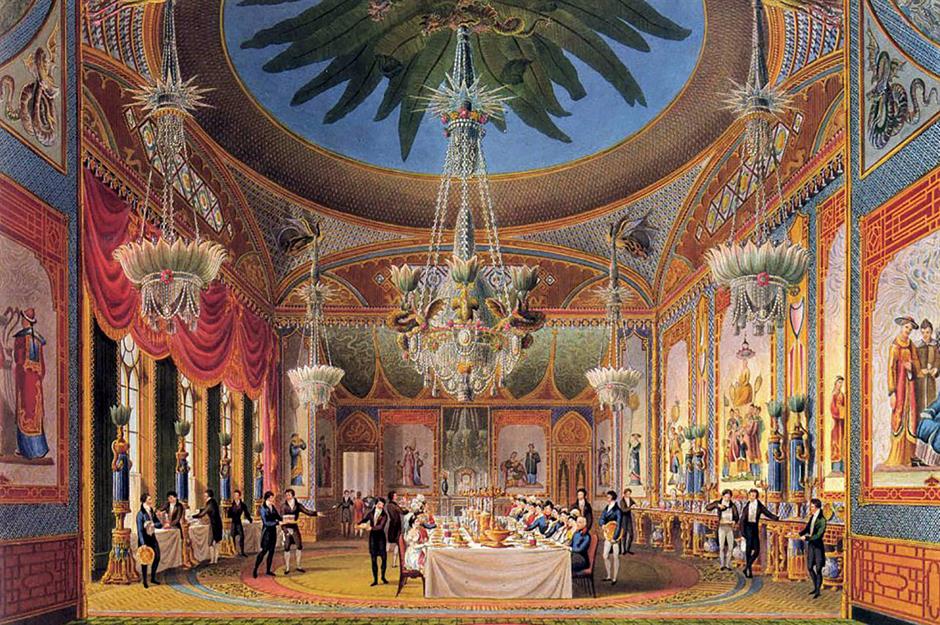weatherontheair.com – Throughout history, royal banquets have been a dazzling display of power, wealth, and cultural sophistication. These grand feasts, often lasting for days, were not merely about the consumption of food but were elaborate rituals that showcased the might and majesty of the ruling class. From the opulent courts of ancient Egypt to the refined tables of Renaissance Europe, royal banquets have evolved, reflecting the changing tides of history, culinary innovation, and the shifting cultural landscape. This article delves into the golden age of feasting, exploring the splendor of royal banquets through time.
Ancient Egypt: The Dawn of Royal Feasting
The ancient Egyptians were among the first to elevate feasting to an art form. Pharaonic banquets were grand affairs, held in celebration of religious festivals, military victories, or the coronation of a new ruler. These feasts were characterized by an abundance of food, including bread, beer, fruits, vegetables, and meats, often roasted or stewed with spices. The banquet halls were adorned with flowers and guests were entertained by musicians, dancers, and acrobats. The opulence of these banquets was a reflection of the wealth and stability of the Egyptian empire.
The Roman Empire: Excess and Grandeur
The Roman Empire took feasting to new heights of excess and grandeur. Roman banquets, known as “convivia,” were elaborate affairs that could last for hours, featuring multiple courses of exotic dishes, such as peacock, flamingo, and dormice coated in honey and spices. The Romans were also known for their love of wine, which flowed freely throughout the banquet. The dining rooms, or “triclinia,” were designed for reclining, with guests lounging on couches as they ate and socialized. The decadence of Roman banquets was legendary, often criticized by philosophers and poets for their excess.
The Middle Ages: Chivalry and Feasting
In the Middle Ages, royal banquets were a central part of court life, often held in conjunction with tournaments, weddings, and coronations. These feasts were a display of chivalry and courtly love, with knights and ladies engaging in elaborate rituals of service and honor. The food was equally impressive, with dishes like swans and peacocks served in their plumage to impress the guests. The banquet halls were decorated with tapestries and banners, and minstrels provided entertainment. The medieval banquet was a testament to the power and prestige of the ruling class.
Renaissance Europe: Art and Refinement
The Renaissance brought a new level of artistry and refinement to royal banquets. The Italian courts, in particular, were known for their elaborate banquets, which featured innovative dishes created by master chefs. These feasts were not just about the food but were a total sensory experience, with music, art, and even fireworks complementing the meal. The Renaissance banquet was a showcase of humanist ideals, celebrating the beauty and potential of humanity.
The Enlightenment and Beyond: The Decline of Excess
By the time of the Enlightenment, the extravagance of royal banquets began to wane, as philosophers and reformers criticized the excesses of the ruling class. The French Revolution, in particular, marked a turning point, with the opulence of the ancien regime coming to symbolize the injustices of the old order. In the centuries that followed, royal banquets became more subdued, reflecting the changing social and political landscape.
Conclusion
The history of royal banquets is a fascinating journey through time, reflecting the shifting cultural, social, and political landscape. From the ancient Egyptians to the Renaissance courts, these grand feasts have been a dazzling display of power, wealth, and cultural sophistication. While the excesses of the past have given way to more restrained celebrations, the legacy of royal feasting continues to captivate our imagination, reminding us of the enduring power of food to bring people together and celebrate the joys of life.
